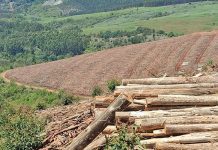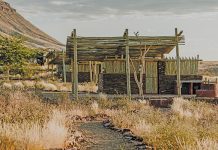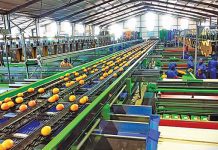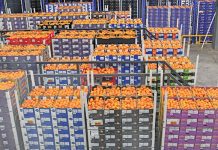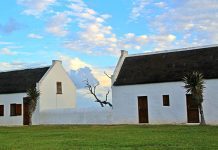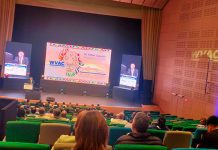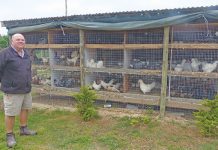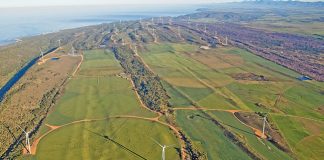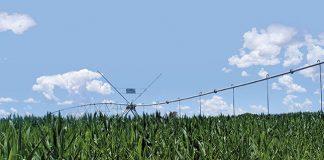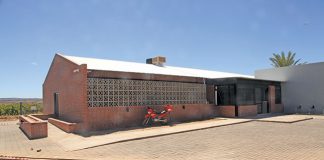Power supply has always been one of Kobus van der Westhuizen’s biggest headaches. He depends on electricity to cool and dry 80% of his stone and pome fruit crop. In 2013, his annual electricity bill escalated to about R360 000. Power outages also had a major impact on electric equipment. “I lost thousands of rands annually from compressors breaking down due to power outages,” he recalls.
READ:Arson suspected in Drakenstein fires
The solution to this problem lay in hydro-energy. Kobus’ farm Murludi, situated north of Tulbagh in the Western Cape, is ideal for hydro-electric generation, obtaining water from springs in the Witzenberg mountain range that towers above the farm.
The hydro-electric plant was designed and installed by Green Water Energy towards the end of 2013, and slashed Kobus’s electricity bill by more than half during the fruit season, with a demand of up to 124kWh. Murludi is now entirely self-sufficient in winter, when water flow is strong.
“We reduced our consumption of Eskom electricity by 22 000kWh last year, and fed even more than that into the national grid,” he says. The hydropower plant consists of two units. The first has four parallel water turbines with induction-alternators, each with the potential to generate 11kWh. In total, the unit can deliver at least 29kWh.
“With four small turbines in parallel instead of one large turbine, we can run the system on one or two turbines when the water flow is low,” says Chris Coetzee, project manager at Green Water Energy, of the first unit. “We can also service a turbine and its alternator without having to switch off the entire system.”
The four turbines generate asynchronous electricity that can be fed into the national grid. When the utility begins paying people to generate electricity, Kobus will receive additional income.
“The time for this to happen is drawing near as Eskom’s power problems become more desperate,” he says. He has already installed a meter to measure the electricity being fed into the national grid. The drawback of asynchronous electricity is that it cannot be used when Eskom power is down.
However, the second unit consists of one large turbine and an ordinary alternator that has the potential to generate 30kWh of synchronous energy. It switches on automatically when a power failure occurs. Synchronous electricity cannot be fed into the national grid, however.
Initially, Kobus experienced problems with the synchronous system because water supply fluctuations caused fluctuations in the flow of electricity, threatening damage to equipment. To improve the system, the generated electricity is now stored in a battery bank and inverted to ensure a stable current. The bank consists of sixty 100A deep-cycle batteries with a total storage capacity of 30kWh.
As only the energy that is pumped into the batteries is withdrawn, Chris expects the batteries to last longer than would have been the case if energy were withdrawn only from the bank. He adds, however, that he is uncertain how long they will last.
Profit potential
Generating electricity from water requires two elements: a water source and a height of about 100m. “Altitude is a crucial factor, with reservoirs on the top and bottom of this hill,” says Chris.
“Water flowing from the top to the bottom reservoir generates electricity for use during high-tariff periods. In low-tariff periods, water can be pumped back up into the top reservoir using this cheaper electricity. This will be especially profitable when Eskom starts paying for electricity.”
Based on the electricity tariffs of June to August last year, such a set-up would enable Kobus to use the upper reservoir at night at an off-peak tariff of 37c/unit and generate energy during peak times when the rate is R2,35/unit. “If Eskom agrees to pay R1,37/unit for this electricity, as is currently being discussed, one would earn R1,00 for every unit the system generates,” he says.
Water infrastructure
A 200mm high-density polyethylene (HDPE) pipe conveys the water at a pressure of 1 200kPa as measured at the lower reservoir. No water is wasted because it is not used for anything else. In this closed system, in fact, practically no water is lost to evaporation; only a small amount in the stream is withdrawn and diverted into the pipe. After moving through the hydro-electric turbine, the water is returned into the main stream from which the farm is irrigated.
The 5m end-section of the water pipe to which the turbine is connected is made of galvanised steel. The pipes are buried underground for protection, with the final section cemented into a 2m x 4m concrete block for stability. The water, under high pressure, spins the turbines driving the alternators.
To increase the system’s benefits, Kobus withdraws water for irrigation only at weekends, as negotiated with his neighbours downstream. Orchards are irrigated from the reservoirs during the week. This arrangement is advantageous in that it enables him to generate more electricity during the week, when electricity is more expensive.
Empty promises
Kobus regrets that Eskom does not fully support projects such as this. “Eskom promised to subsidise the full cost of the plant, about R485 000 without the pipeline, which cost an additional R250 000,” he explains.
“According to the agreement, 70% of the money was meant to be paid when the system started working, while the rest was to be paid later. “We’re still waiting for this to materialise.”
Despite this, Kobus is satisfied with the plant and estimates it will take about five years for it to pay for itself, through savings on electricity bills and repairs.
Correcting the power factor
In addition to the hydro-electric turbines, Kobus invested in a power factor correction capacitor, a purchase he believes is one of his best investments. The capacitor compensates for energy ‘leakages’ that occur in an electric network due to the heating of equipment, mechanical failure or energy loss, by limiting the amount of energy lost through an induction motor’s magnetic field.
“Instead of the motor using new energy to generate this magnetic field, the capacitor makes the same energy to generate this field available to the motor over and over again. This is reactive energy,” says Chris Coetzee, project manager at Green Water Energy.
The capacitor allows Kobus to use less power for the same job. It has also reduced the farm’s maximum electricity demand from 130kWh to 87kWh, meaning that Kobus no longer pays an annual fine of R18 000 for drawing too much electricity.
But the technology’s greatest advantage, according to him, is that it ensures a constant supply.
“It has paid for itself in less than a year by reducing mechanical failure and breakage. I used to have compressor or other electric appliance breakdowns almost annually.”
A new compressor costs around R33 000, while refilling a cooling appliance with gas when a compressor breaks costs around R5 000. “By reducing a farmer’s maximum electricity demand, this technology could help Eskom to get to a point where load shedding is no longer necessary,” he says.
Phone Chris Coetzee on 082 829 9210 or email him at [email protected].
Email Kobus van der Westhuizen on 023 230 0732 or email [email protected].
This article was originally published in the 20 March 2015 issue of Farmers Weekly.

